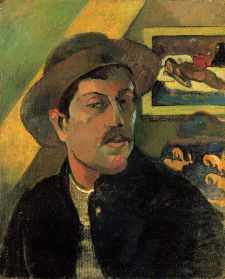(Paris 1848 - Dominican Island of the English West Indies 1903)
The French painter and sculptor Eugène Henri Paul Gauguin was one of the most important French painters of the nineteenth century. His work marked the beginning and the development of Fauvism, which was an artistic movement that took place between 1898 and 1908.
His grandmother was the Peruvian writer and feminist Flora Tristan, who was the daughter of a Spanish colonel at the service of Peru and of a French woman. Gauguin’s family was liberal. His father, Clovis Gauguin, was an antimonarchical journalist and his mother was Aline Marie Chazal. After Napoleon III’s coup d’état of 1851 in America when he only was a child, his family fled to Lima. In 1855, Gauguin went back to France and studied in the seminar and in the lyceum of Orléans.
When he was seventeen he boarded as attaché in a merchant marine and remained in the navy till 1871. He lived in Rouen, Copenhagen, Le Pouldu, Concarneau, Arles, Tahiti and Paris.
He showed himself to be a landscaper and painted the most picturesque places of Britain in a natural manner, which is the strength that characterizes his artworks. He went to Oceania to find an appropriate environment to his needs. He surprised the public with his oceanic scenes, that were completely unknown and new in the world of art and that meant powerful decorative qualities for the author.
Gauguin founded the Pont-Aven School when he went back to Paris in 1890. He became friends with Van Gogh and Pisarro. In 1893 he exhibited his artworks in Durand-Ruel.
He also realized several interesting etchings and lithographs. Some of his most important artworks are Lithographic Drawings, The Inventory, Cows by the Sea, Donkey by the Lane, The Canoe, Christmas Night, Portrait of Madame Gauguin, In Tahiti and Garden in Paris (Museum of Copenhagen). Gauguin’s art can only be understood from his personal point of view due to his love of the primitive and the Indian subjects. It can be noticed both in his paintings and in his sculptures of oceanic kind, as well as in the few writings he left.

 World Art Day: 10% in original artworks
World Art Day: 10% in original artworks 
